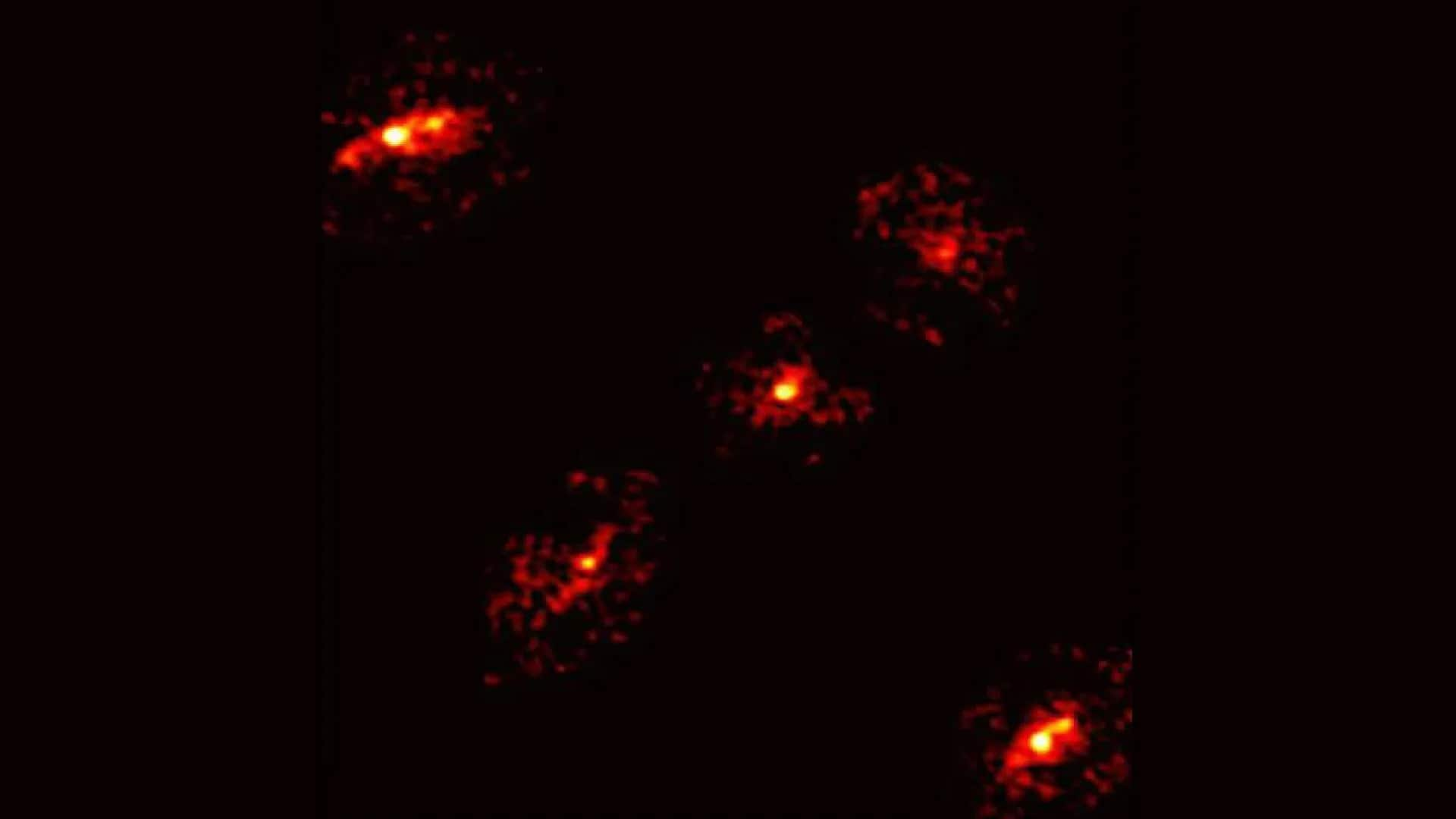
Rare five-point 'Einstein cross' offers new clues about dark matter
What's the story
Astronomers have discovered a rare 'Einstein cross' in the galaxy HerS-3. What makes this discovery so special is the presence of a fifth point of light, instead of the usual four. The anomaly was first detected by France's Northern Extended Millimeter Array (NOEMA) and has since been confirmed by data from Chile's ALMA telescope and computer simulations.
Cosmic curiosity
What is an Einstein cross?
An Einstein cross is a rare cosmic phenomenon where a massive foreground object bends light from a more distant galaxy, creating four bright images. However, the unexpected fifth point at the center of HerS-3 challenged scientists and made them question their instrument's integrity. The discovery was published in The Astrophysical Journal and offers an opportunity to study dark matter distribution in galaxies.
Matter manipulation
Dark matter distribution
Dark matter, an invisible substance with a strong gravitational pull, can bend the paths of photons. This bending creates light distortions that provide astronomers with unique insights into dark matter's distribution. The fifth point of light in HerS-3 is believed to indicate a vast region of dark matter, which could help scientists better understand its role in shaping our universe.
Halo hypothesis
Extra light point could be a dark matter halo
The extra light point in HerS-3 is thought to be a dark matter halo, which can bend light from a background galaxy without being visible itself. The team behind the discovery ran computer models and ruled out closer objects interfering with HerS-3's light. They verified their findings by modeling a dark matter halo in front of the galaxy, which perfectly matched the unusual pattern observed.
Cosmic influence
Dark matter and light bending
Dark matter doesn't interact with light, making it invisible. However, its gravitational pull can affect the motion of visible matter and light. This effect is most commonly observed in galaxies, where dark matter halos can warp the light from background galaxies without being directly observed. The discovery of the fifth point of light in HerS-3 provides a unique opportunity to study dark matter's influence on cosmic structures.